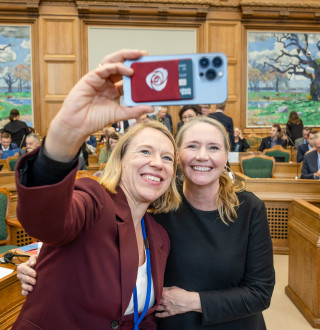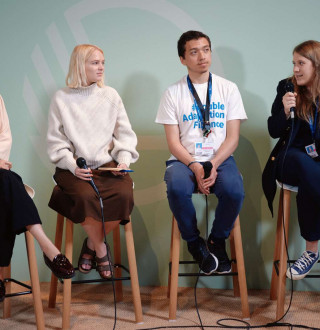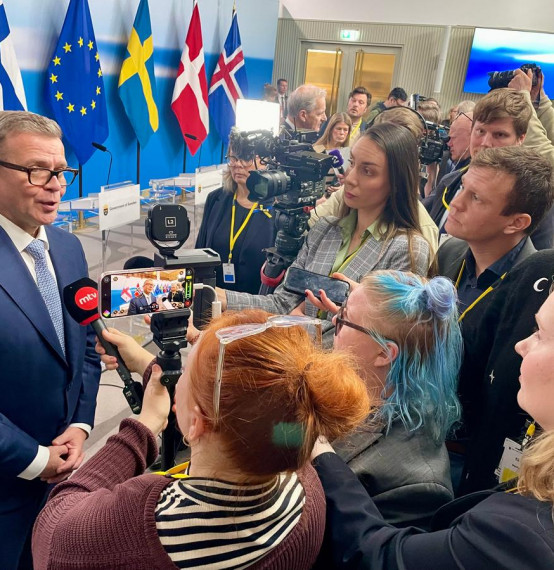In today’s hyper-connected world, smartphones have become indispensable tools for communication, learning and entertainment. Yet, their widespread presence raises pressing concerns, particularly when it comes to young people. Across the Nordic and Baltic regions, where digital connectivity is among the highest in the world, these issues are particularly evident.
Smartphones are increasingly criticised for their addictive nature and potential harm to mental health, academic performance and overall well-being. As debates heat up over the role of smartphones and social media in young lives, societies worldwide are struggling with how to balance their benefits with the risks. This article explores the growing tension between the opportunities and challenges of smartphone use, the impact on younger generations and the measures being taken to address these critical issues.
Smartphones can serve as a powerful tool in today’s digital world, enhancing access to information, improving communication and creating new opportunities for learning. However, their benefits come with significant challenges. When smartphones become distractions at school, disrupt sleep patterns and contribute to increased anxiety, the negative consequences become clear. As the screen time increases, reading skills tend to decline. According to this year’s OECD report, a majority of 15-year-old students were distracted during class, either by their own smartphone use or that of their peers. Moreover, the latest PISA report revealed a significant drop in average scores for mathematics and reading across all the Nordic countries compared to 2018, while average science scores remained unchanged. Anders Schleicher, Director of the Education and Skills Directorate at the OECD, attributes this decline primarily to the growing use of social media and smartphones.
Avoiding smartphones can be challenging since many platforms use algorithms to stimulate the brain’s reward system, fostering addictive behaviours. Activities like reading a book or engaging in activities that don’t provide the immediate dopamine rush of digital interaction may feel less appealing.
Beyond its impact on academic performance, excessive smartphone use also affects children’s physical and mental health. Studies show that prolonged screen time can contribute to myopia (nearsightedness), especially for young children. Mental health is also at risk, with many young people, particularly girls, reporting increased anxiety and lowered self-esteem linked to social media use. The issue is related to difficulties in setting boundaries, as many youngsters struggle to put their phones away at bedtime, resulting in sleep deprivation. Jonathan Haidt, social psychologist and professor of ethical leadership, has labelled the next generation “the anxious generation”, a term that highlights growing concerns about the well-being of future leaders.
The impact of technology is twofold. On the one hand, it provides valuable opportunities, such as greater flexibility, improved access to information and enhanced social connectivity. On the other hand, it presents risks such as disrupted sleep, declining academic performance, heightened anxiety and physical issues such as myopia.
One way to tackle these challenges is by implementing policies such as smartphone bans during school hours to help minimise distractions. With such measures, smartphones could still be used for educational purposes with teacher approval, but under strict supervision and limitations. This approach has gained considerable popularity in 2024, with numerous schools across the Nordic and Baltic countries adopting it. The outcomes have been positive, resulting in improved concentration during lessons, increased social interaction and enhanced creativity.
Additionally, national guidelines have been introduced in Denmark, Finland, Norway and Sweden recommending no screen time for children under the age of two. Norway goes further by advising a limit of one hour per day for children aged 6–12, while Finland applies the same one-hour limit for children aged 2–5.
Meanwhile, discussions are underway about implementing a nationwide ban, similar to Australia’s which enforces a minimum age of 16 for social media use. The organisation Smartphone-Free Childhood, established in Denmark, advocates for a smartphone-free childhood, as its name suggests, and has grown to over 3000 members. It has proposed age limits of 14 for smartphone use and 16 for social media with mandatory ID verification. The organisation also highlights the crucial role of parents setting boundaries until such age limits become a reality. As the first initiative of its kind in the Nordic countries, it has since inspired similar movements in other countries.
Despite these measures, some question whether bans are the best solution. Jesper Tække, a media researcher at Aarhus University, refers to banning mobile phones in schools as a populist measure that does not lead to the desired result. Instead, he advocates for schools to focus on teaching students digital literacy and critical thinking. However, Kristján Ketill Stefánsson, an assistant professor of pedagogy at the University of Iceland’s Faculty of Education emphasises the importance of balance. He proposes a ‘smartphone holiday’ as an alternative to an outright ban.
However, banning smartphones or implementing a smartphone holiday could restrict some children’s ability to connect online. For those who rely on the internet as their primary social network or for reaching trusted adults outside their home, it can serve as an essential lifeline. Another concern is social exclusion. When some children do not have access to smartphones while their friends do, it can lead feeling excluded. At the same time, advocates of restrictions suggest that social norms can change if parents and schools work together.
Others argue that a ban should specifically target social media, rather than smartphones in general. Haidt points to a sharp decline in mental health since 2012, when social media became widespread, suggesting that it has contributed to rising rates of anxiety, worry and depression among young people. However, Oxford professor Peter Przybylski offers a different perspective. He acknowledges the correlation between social media use and mental health challenges but suggests that the link exists because individuals who are already anxious or depressed tend to use social media more than others.
Some also worry that such bans could infringe upon individual rights, potentially creating unintended consequences. For example, in South Korea, where an online gaming ban during nighttime hours for children was implemented, the policy failed to achieve its intended outcomes, raising concerns about the efficacy of generalised bans. This highlights the complexity of enforcing such measures, suggesting that more targeted, balanced approaches may be needed to address the underlying issues without overstepping personal freedoms.
The future of smartphones and social media remains uncertain, with debates unfolding from family-level concerns to the international stage. Ursula von der Leyen, President of the European Commission, has emphasised the need for a coordinated European response to address these issues. However, as the year 2024 comes to an end, few concrete regulations have been put in place.
While smartphones have become an integral part of modern life, their impact on young people is an issue calling for serious attention. Although access to digital technology provides opportunities for education and awareness, these tools have been shown to harm youngsters when used without age-appropriate support and adult supervision. As Haidt suggests, we may one day look back and find it just as alarming to see a child with a smartphone as it once was to see a child with a cigarette, drawing a parallel between the addictive nature and potential harmful consequences of both.
The debate surrounding smartphones, social media and screen time for youngsters is far from settled. Developments across the Nordic and neighbouring countries continue to evolve rapidly with new policies, research and initiatives emerging week by week. As such, this article serves as a snapshot of the current landscape, reflecting the state of affairs up until the moment of publication.











